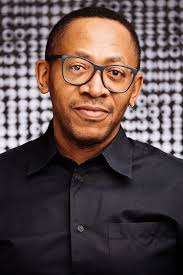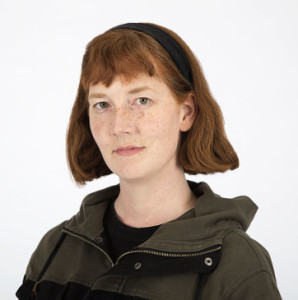Adela Goldbard
Adela Goldbard was the 2017 School of the Art Institute of Chicago Awardee of the Edes Foundation Prize.
Goldbard is an artist and filmmaker with a research-based practice 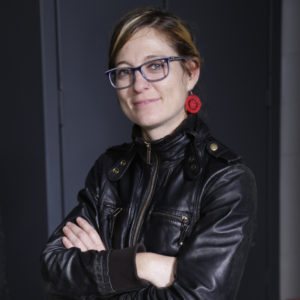 who believes in the potential of art to generate critical thinking and social transformation. With her work she questions the politics of memory by suspecting archeological preservation, official history, mass media, and popular culture. She dissents by making visible defiant events that have been forgotten or erased and by ritually and allegorically obliterating social evil. Goldbard challenges traditional cinema by re-enacting history and by collectively building, staging and importantly, destroying, always with a subtle amount of parody and dark humor. Her work includes photography, video, sculpture, text, public actions and immersive installations.
who believes in the potential of art to generate critical thinking and social transformation. With her work she questions the politics of memory by suspecting archeological preservation, official history, mass media, and popular culture. She dissents by making visible defiant events that have been forgotten or erased and by ritually and allegorically obliterating social evil. Goldbard challenges traditional cinema by re-enacting history and by collectively building, staging and importantly, destroying, always with a subtle amount of parody and dark humor. Her work includes photography, video, sculpture, text, public actions and immersive installations.
Goldbard holds an MFA as a Full Merit Fellow in Sculpture from the School of the Art Institute of Chicago (2017) and a bachelor’s degree in Hispanic Language and Literature from the National University of Mexico. Goldbard is a member of the National System of Artistic Creators of Mexico since 2015. Her work has been exhibited in Germany, Holland, Belgium, France, Italy, Austria, Hungary, Spain, Philippines, Russia, Argentina, Canada, USA, and widely in Mexico. She lives and works in Chicago and Mexico City.
During the Edes award year Goldbard worked on an expanded cinema project titled “The Last Judgment”, which will be based on a XVI century play written in Náhuatl by Fray Andrés de Olmos as a spiritual conquest tool during the Spanish colonization of present-day Mexico. The play was adapted to a contemporary setting, problematizing and reflecting on the current migration crisis in the US, the strengthening of border politics, the hybridization of culture and language and the cultural Reconquista of the lost territory. The stage was built with the help of immigrant workers. “The Final Judgment” was simultaneously performed live and filmed, inserting the spectators in a stage/backstage (meta)experience. The final work is presented as a multi-channel video installation.
Norman Teague
Teague received his MFA in Architecture, Interior Architecture, and Designed Objects (AIADO) from the School of the Art Institute of Chicago (SAIC). He is a father of two sons who lives on the South side of Chicago. During his Edes Prize year, he launched a design studio in his neighborhood to increase area residents’ access and exposure to art and design to facilitate social change.
Norman’s work, Plank Sinmi Stool, was featured in whatnot, AIADO’s exhibition at Milan’s 2015 Design Week; and was named “Best In Show” by Metropolis. His birch plywood and rubber stool is inspired by the traditional American rocking chair, and creates an innovative perch for temporary respite. Plank +, a wooden bowtie fabrication project that employs youth in Chicago, continued Norman’s work merging design, community, and educational practice. Teague says, “I believe in impacting the neighborhood economy through direct acts of designing, making, selling, and marketing products that encourage sustainability.”
“During my Edes Prize year, I plan to launch my design studio in Chicago’s South Side, increasing access to design education for area residents. Presently, there is no place that promotes design as a career choice, let alone as a device for change, so I would like to engage audiences in the design process by hosting events in my workspace where they can interact with art and design practitioners, enabling them to view making as an attainable choice in achieving change. I plan to develop a space that will showcase old and new furnishings and objects and evoke the stories behind them. The space will also create employment, encourage storytelling, and generate revenue as a means of creating capital to support design openings, exhibitions, design lectures, workshops, dinners with professionals and patrons of the community, design/build charettes and pop-up design shows and performances. By including community members in the design process, I find that positive interaction becomes a bonding agent for independent design to take place. I have a solo show planned at Blanc gallery in Bronzeville, and am coordinating The BLK Atelier Collective, a traveling exhibition that will showcase designers of African Diasporic backgrounds and the moments that inspire them in today’s urban environment.
“Lastly, I plan to make products that convey my personal narrative as a professional practitioner in the design field as an example of success in the field for young designers who live in the neighborhood. I dedicate considerable time and effort to these projects in an effort to promote design as a monumental force in facilitating community empowerment.”
Leonard Suryajaya
Leonard Suryajaya was the 2015 School of the Art Institute of Chicago Awardee of the Edes Foundation Prize.
Leonard, who is originally from North Sumatra, Indonesia, received dual bachelor’s degrees in Theatre Art and Creative Photography from California State University Fullerton in 2013.
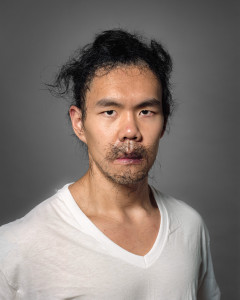
He received his Master of Fine Arts in Photography at SAIC in May 2015. He has exhibited his work extensively, including at Expo Chicago, Mana Contemporary, Defibrillator Gallery, and the Irvine Fine Arts Center in Irvine, CA.
Influenced by the cultural milieu of inter-ethnic relations in Indonesia, Suryajaya’s work explores intricate and complicated layers of selfhood in the context of cultural background, intimacy, sexuality, and personal displacement. By utilizing photography, video, along with elements of performance and installation, and through the use of personal narrative and story telling, his work challenges and deconstructs the perspective we use to scrutinize and observe our roles in a transnational global world.
Spencer Elias
Spencer Elias was the 2014 School of the Art Institute of Chicago Awardee of the Edes Foundation Prize.
Spencer was born in San Francisco in 1987. He graduated from the University of Oregon in 2011 before receiving his MFA from The School of the Art Institute of Chicago in 2014. Stucky has exhibited 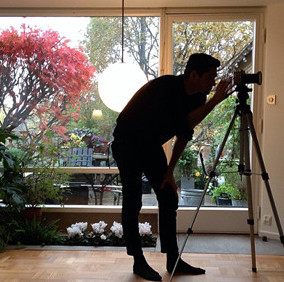 in the US and abroad including the Elmhurst Art Museum, and Schingoethe Gallery, at Aurora University, as well as featured in Ambit Magazine (London), and other publications. Stucky currently lives and works in Chicago, IL and is an instructor at the School of the Art Institute.
in the US and abroad including the Elmhurst Art Museum, and Schingoethe Gallery, at Aurora University, as well as featured in Ambit Magazine (London), and other publications. Stucky currently lives and works in Chicago, IL and is an instructor at the School of the Art Institute.
By Way of Repose, his Edes year project, is a film that examines a connection between photography, avant-garde dance, and architecture in Stockholm during the 1930’s. Social and familial ties of three figures from this period are used as a narrative framework: architect Eskil Sundahl, Eskil’s son – architectural photographer Sune Sundahl, and dancer Birgit Åkesson. The film features the choreography of Trisha Brown, to highlight a continuing lineage of influence of this location within Modernism. Soloists from the Royal Swedish Ballet performed Brown’s Accumulation pieces in locations that hold a historical significance to the period and individuals examined in the film.
Meghan Moe Beitiks
Meghan Moe Beitiks was the 2013 School of the Art Institute of Chicago Awardee of the Edes Foundation Prize.
Moe works with associations and disassociations of culture/nature/structure. She analyzes perceptions of ecology though the lenses of site, history, emotions, and her own body in order to produce work that interrogates relationships with the non-human. The work emerges as video, performance, installation, writing or photography depending on what arises from her process of research and improvisation.
She received her BA in Theater Arts from the University of California, Santa Cruz, where she studied playwriting, acting, movement and scenic design. She has an MFA in Performance Art from the School of the Art Institute of Chicago, where she studied Bio Art, Social Practice, Environmental Chemistry, and performance methodologies.
As part of her year as an Edes Awardee, within which she sought to develop her practice according to Karen Barad’s concept of “Intra-Action,” Moe spent several months at a SymbioticA, the Centre for Excellence in Biological Arts, in Perth, Australia. She trained with scientists at La Trobe University in Melbourne regarding the proper care and handling of anerobic bacteria, then returned to Perth to build her own anerobic facilities and perform with them. This was for a piece called A Lab for Apologies and Forgiveness v.5, part of a larger series within which Moe looks at what it means to apologize to a site that has been altered or contaminated by human use. She was also a fellow at Ox-Bow School of Art and Arts Residency, and presented work at the World Stage Design conference and the Out of Site Festival in Chicago. Documentation of work from her Edes year was later displayed at the Victoria and Albert Museum in London.
She has presented work in California, Connecticut, Chicago, Nevada, Michigan, Brooklyn, Wales, London, Latvia and Russia. She was a Fulbright Student Fellow in Theater to Latvia and received a MacDowell Colony fellowship from the Leon Levy Foundation following her Edes award year, as well as residencies at the Kala Art Institute and the I-Park Foundation.
Chet Catherine Pancake
Catherine Pancake was the 2012 School of the Art Institute of Chicago Awardee of the Edes Foundation Prize.
She is a filmmaker and sound artist. Her work has been presented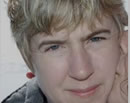 nationally and internationally in a wide variety of venues, including the Museum of Modern Art, Royal Ontario Museum, Baltimore Museum of Art, Academy of Fine Arts Prague and Big Screen Plaza, Herald Square NYC. Her awards include the Paul Robeson Independent Media Award, Jack Spadaro Documentary Award, Maryland State Arts Council Individual Artist Award, and the Silver Chris. Her films have been broadcast in the U.S.A. and Great Britain (Sundance Channel, PBS, FreeSpeech TV, CommunityChannelUK) and are distributed by Bullfrog Films and the Canadian Filmmakers Distribution Centre. Sound art releases can be found on Ehse Records and Recorded in Baltimore. Pancake completed her MFA at the School of the Art Institute of Chicago in May 2012. She is currently a member of the Vox Populi Gallery in Philadelphia, PA, and teaches in the Center for the Arts at Temple University and the Digital Arts Program at LaSalle University.
nationally and internationally in a wide variety of venues, including the Museum of Modern Art, Royal Ontario Museum, Baltimore Museum of Art, Academy of Fine Arts Prague and Big Screen Plaza, Herald Square NYC. Her awards include the Paul Robeson Independent Media Award, Jack Spadaro Documentary Award, Maryland State Arts Council Individual Artist Award, and the Silver Chris. Her films have been broadcast in the U.S.A. and Great Britain (Sundance Channel, PBS, FreeSpeech TV, CommunityChannelUK) and are distributed by Bullfrog Films and the Canadian Filmmakers Distribution Centre. Sound art releases can be found on Ehse Records and Recorded in Baltimore. Pancake completed her MFA at the School of the Art Institute of Chicago in May 2012. She is currently a member of the Vox Populi Gallery in Philadelphia, PA, and teaches in the Center for the Arts at Temple University and the Digital Arts Program at LaSalle University.
Genius Project, her Edes Year project, is a feature-length documentary film exploring four creative visionaries who self-identify as queer women. The film uses first-person stories, archival footage, verite sketches, and creative re-enactments to deliver a deeply funny, compelling, revelatory, and ecstatic view into the world of these unusual artists. The film features Eileen Myles, Barbara Hammer, Jibz Cameron, and Shannon Funchess.
Sarah Sohn
Sarah Sohn was the 2011 School of the Art Institute of Chicago Awardee for the Edes Foundation Prize.
Sarah holds an M.F.A. in painting from The School of the Art Institute of Chicago, Illinois and a B.F.A. from Art Center College of Design in Pasadena, California. In 2011, she was awarded a 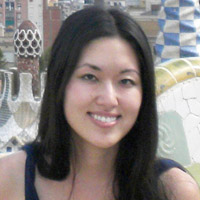 fellowship at the Fine Arts Work Center in Provincetown, Massachusetts. Ms. Sohn’s paintings have been included in numerous group shows in New York, Los Angeles, Chicago and Washington, D.C. Her museum shows include the Provincetown Art Association Museum in Provincetown, Massachusetts, and the National Portrait Gallery at the Smithsonian Institution, Washington, D.C.
fellowship at the Fine Arts Work Center in Provincetown, Massachusetts. Ms. Sohn’s paintings have been included in numerous group shows in New York, Los Angeles, Chicago and Washington, D.C. Her museum shows include the Provincetown Art Association Museum in Provincetown, Massachusetts, and the National Portrait Gallery at the Smithsonian Institution, Washington, D.C.
Nadav Assor
Nadav Assor was the 2010 School of the Art Institute of Chicago Awardee of the Edes Foundation Prize.
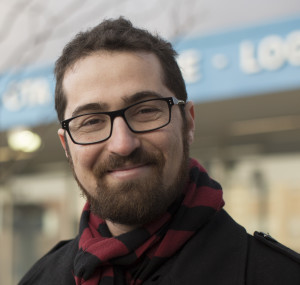 Nadav’s work performatively mediates cities, bodies and personal narratives via lo-fi reenactments of appropriated military-industrial technologies, examining technological mediation as an essential and transformative human condition. Nadav has exhibited internationally in festivals, music venues, museums and galleries in North America, Israel, Europe and Asia. Some recent venues for his work include ISEA Vancouver, Transmediale Festival in Berlin, European Media Arts Festival, the Soundwave Biennial in San Francisco, Residency Unlimited NYC, Spectrum NYC, Hyde Park Art Center in Chicago, the Koffler Center in Toronto, Julie M Gallery Tel Aviv, Xuzhou Museum, China, and many others. Assor’s work has been featured in publications such as Art Forum, Art Monthly, Haaretz, ArtAsiaPacific, the Creators Project, Motherboard, and more. Nadav holds an MFA as a Full Merit Fellow in Art & Technology from the School of the Art Institute of Chicago (2010). He is among the 2011 awardees of the Israeli Ministry of Culture’s Young Artist awards. Since 2012, Nadav has been an Assistant Professor of Expanded Media and a Fellow at the Ammerman Center for Art & Technology in Connecticut College.
Nadav’s work performatively mediates cities, bodies and personal narratives via lo-fi reenactments of appropriated military-industrial technologies, examining technological mediation as an essential and transformative human condition. Nadav has exhibited internationally in festivals, music venues, museums and galleries in North America, Israel, Europe and Asia. Some recent venues for his work include ISEA Vancouver, Transmediale Festival in Berlin, European Media Arts Festival, the Soundwave Biennial in San Francisco, Residency Unlimited NYC, Spectrum NYC, Hyde Park Art Center in Chicago, the Koffler Center in Toronto, Julie M Gallery Tel Aviv, Xuzhou Museum, China, and many others. Assor’s work has been featured in publications such as Art Forum, Art Monthly, Haaretz, ArtAsiaPacific, the Creators Project, Motherboard, and more. Nadav holds an MFA as a Full Merit Fellow in Art & Technology from the School of the Art Institute of Chicago (2010). He is among the 2011 awardees of the Israeli Ministry of Culture’s Young Artist awards. Since 2012, Nadav has been an Assistant Professor of Expanded Media and a Fellow at the Ammerman Center for Art & Technology in Connecticut College.
Cut Stories, his Edes year project, is an installation in which 8 monitors of varying sizes serve as one semi-circular, layered screen, displaying any of six short, true personal narratives covering a range of subjects, from an intimate night conversation in Brasil ending with a man running through the fog holding a severed cow leg, to an American sex scene involving fractured bones and religion, to other tales of surgeries, injuries and car accidents: all transgressions into the participants invisible personal spaces.
The visitor to the installation enters a darkened space in which a panorama of faces is spread over the arc of monitors. It is a constantly panning image shot from the center of a circle of seated participants: most are listening to the story being told by one of them.
Beyond these, in the shadows is the Apparatus: another circle of people, all holding cameras of every type, documenting the event, rotating, contracting and expanding around the inner circle in a dance of mediation. This seemingly continuous image of seated people is actually comprised of adjacent windows into consecutive points of time within the single, constantly panning video: these are tiled next to each other so as to create the illusion of continuous space. The effect of this is that only the central monitor is showing the current, audio-synced, real time. The others are showing adjacent participants at moments that are increasingly further away from the present, towards either the future (left) or the past (right).
Cut Stories: excerpts from installation documentation 2010 from Nadav Assor on Vimeo.









